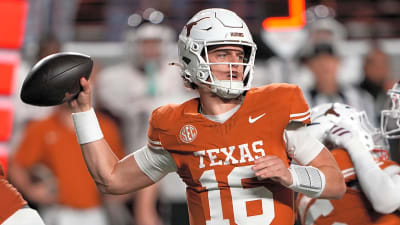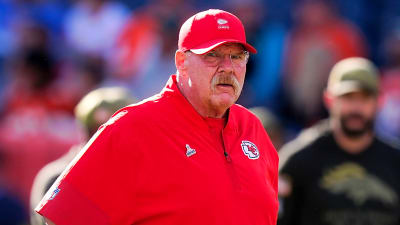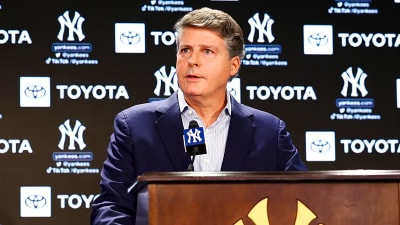Long ago, during a time much different than today, telemark wasn’t just en vogue. It held the distinction of being the technique of the backcountry skier in North America. That cachet stoked strong demand, and the telemark marketplace of the new millennium teemed with gear. Years before social media and smartphones, when ski towns were quiet and affordable and the jamband ethos still had strength, legacy free-heel models abounded while new SKUs routinely came to market–even from alpine brands. In those halcyon Y2K days, several boot manufacturers offered entire stables of duckbilled footwear, and a slew of companies new and old then stocked myriad binding and ski options for the free-heel skier.
To speak of that era is to almost invoke dinosaurs and Bronze Age civilizations. The current telemark retail landscape so little resembles this bygone zenith of commerce that it seems fantastical. But that hasn’t stopped the misty-eyed nostalgics of the telemark world from dreaming of its return.
Because it wasn’t just boutique free-heel brands that were ascendent, like the renowned companies Karhu and Garmont, who were then so eminent that a few of their models survive to this day, quietly living on, though under new banners. Both brands are now long since gone.
In a reality that now seems fanciful, mainstream ski companies that would later find themselves far from the telemark world were actually integral to its rise. Black Diamond, the climbing outfit built from the ashes of Chouinard Equipment, not only carried a line of bindings; their relationship with Scarpa made them an essential force in the creation of the first all-plastic telemark boot, eventually leading to their own well-remembered if now departed line.
Even a plethora of skis, from Rossignol’s Sickbird series to Mike Hattrup’s definitive K2 models, gave telemark skiers specific options marketed for their entire rig: boot, binding, ski and all. And all could be found far and wide–from the shelves of core retailers to the many skiing publications then still in print; telemark advertisements gracing their glossy pages for the skiing masses to see.
The paradigm has indeed shifted. Even as the sport seems to be in resurgence, telemark retail hasn’t meaningfully recovered from its precipitous fall at the hands of alpine touring bindings and a skiing populace fatigued by free-heeling Deadheads. The time before with its assemblage of mainstream outfits bringing telemark gear to market now seems not only twenty years removed, but light years from the current gear landscape.
But the dream of rekindling the attention of larger makers has long danced in the telemark hivemind. Maybe, just maybe, a scenario could play out where tele skiers wouldn’t just get new gear from their own steadfast makers. Perhaps the titans of the fixed heel world would jump in again with their gigantic manufacturing capabilities, and inject lowly telemark with a massive dose of R&D.
So could a bigger manufacturer come back to telemark?
Jason Quintana–an engineering graduate of both Dartmouth and Stanford who was the chief designer of Scarpa’s T2eco boot in the nineties–has long been tapped into the business of telemark gear development. His experience includes a long stint as a consultant to Black Diamond’s telemark department, where he authored two patents. And to this day he designs and 3D prints his own releasable telemark bindings.
Laying out a vision of a big alpine player going for it in the telemark boot space, Quintana invokes the hypothetical example of a mainline manufacturer hiring a telemarker to lead the department.
“It would have to be something like that, where somebody that's the ski boot line manager just loves telemarking and sees an opportunity for a minimal investment,” says Quintana. “Because they’re doing this full line of alpine molds anyway and the boot happens to be well set up so that they could do an insert in the mold to put a bellows in and then just use the more expensive Pebax material for the telemark version.”
But Quintana sees this possibility as fraught with the dearth of telemark skiers not just in general, but in design and decision-making roles at the larger manufacturers.
“If it's an alpine-based company that doesn't have any history of telemark, it doesn't have any passion in the engineers and the managers there. It's just not going to happen,” Quintana says. “Because it's still not going to make any business sense to come out with a dedicated telemark boot, it would have to be something that they leveraged other investments to enable. I could see it happening, but it has to be the right personalities at the right time.”
The luck of having the right personalities at the right time has seemed instrumental in recent telemark manufacture and innovation. Kim Miller, Scarpa North America CEO–himself long a telemark skier–has been credited for playing an outsized role in the telemark bootmaker staying on the free-heel path. Their revamped TX Pro marked the first meaningful upgrade to telemark boots in nearly a decade.
As ever, the business case of a new telemark model was unavoidably necessary to vet. “There always needs to be a business case,” Miller says.
Miller details how manufacturing and business strategy in something as esoteric and small as telemark comes with unique nuance, even for a company as dominant in the space as Scarpa is, creating a specific scenario for feasibility.
“It seems like a very small market, that’s certainly how it appears,” says Miller. “But here’s the deal–it’s not just about the size of the market but it’s about the market share from a business case perspective. We’re basically the only ones doing telemark boots–there’s a few other brands out there doing it but I’d say not to the level we have. So small market but big market share is the relationship that makes it economically viable, if I can be so bold to use that term,” Miller says laughing.
While this allows a larger company with a free-heel background like Scarpa to continue taking the plunge into telemark, no other mainstream-adjacent maker stands in the same shoes, making the entrance into the realm daunting–and risky–for other makers.
But one mainstream player did indeed have a dominating presence in the telemark world, and their free-heel arc is to this day seen as the exemplar of a mainline ski company changing the scope of telemark. That company is K2, whose telemark and randonee ski division–legendarily led by Mike Hattrup of Blizzard of Ahhhs fame–impacted the sport writ large. And Hattrup’s insights bring to light not only how much the manufacturing landscape has changed for telemark equipment, it also shows the challenges a mainstream maker would have diving into that space today.
In the nineties, as shaped skis began to take off, Hattrup and K2 were bent on innovating, and were amongst the first brands to drop straight skis and offer only the cut hourglass planks of the new era. And as a hard-skiing alpiner and late convert to the free-heel technique, Hattrup also saw the promise in Scarpa’s Terminator–the first all-plastic telemark boot–launched in 1992.
“I knew that shape was better and it didn't matter if you were making a tele turn or an alpine turn, shape was superior. And so I leaned into it right away,” remembers Hattrup. “And I also recognized that as an alpine skier that plastic was better than leather. So we really steered our whole collection towards plastic boots and shaped skis.”
K2 would lead the charge on the telemark-specific ski front during the second wave of free-heel skiing precipitated by those plastic boots, a reign that would make the brand ubiquitous as the sport rose. They were early or first to market with many telemark offerings, including mid-fat, fat, twin-tip, and women’s models.
The brand would come to dominate the telemark ski world, where for a time they accounted for nearly half of all skis sold in that market. But that time wouldn’t–that time couldn’t last. When asked to parrot Scarpa’s Kim Miller that there must have been a strong business case for K2 to go all-in on telemark models, Hattrup smiles. “Well, yes and no,” he says.
“Part of the reason we were able to do it is because all those molds had been built by the alpine demand, right? So, we couldn't have done what we did if we had to pay for all the back end of it from an engineering and development standpoint,” Hattrup says, echoing Jason Quintana, the developer of the T2eco. “So we were able to piggyback on our alpine department from that standpoint. That helped us against companies like Tua or Karhu that were telemark-only. They just didn’t have the resources of a big alpine brand.”
While that position allowed K2 to take advantage of the strong vibe telemark then enjoyed, it was beholden to the economies of scale of the alpine end of the business, and was never designed to be sustained by telemark sales. And as skis got wider, and alpine touring bindings progressed and became more available (Hattrup references the Fritschi Diamir) demand for telemark–before viewed as the standard gear for accessing the backcountry–cratered. Hattrup remembers that legacy telemark shops themselves began to pivot as the market shifted.
“Eventually our telemark dealers were asking for some of our alpine skis and more and more they were looking for stronger, burlier skis,” Hattrup says. As telemark fell out of favor as the aughts turned late, and K2’s swelling lines of alpine, randonee, and telemark skis became redundant, the fate of the division was sealed. “That's when we blended the line. We killed K2 telemark–which was a sad day–and started K2 Backside,” Hattrup recalls.
Much has changed since then. Notions of telemark-specific skis have more or less evaporated in the free-heel world, with most skiers finding what they need from existing alpine models–though Bishop Telemark’s boutique line marks an interesting counterpoint to that. Moreover, while the sport appears to be rising again, telemark remains a backwater to the wider ski industry.
Asked if it might be possible for a mainstream manufacturer to enter the telemark space again, Hattrup shakes his head. “No. Sorry. Short, blunt answer,” he says laughing.
Hattrup elaborates: “The market's not big enough. The market shrunk since back when I was doing it. The early 2000s was the heyday of telemark. That's when it was as big as it has ever gotten. And it was still tiny. Even for K2, which was the number one ski brand, it was a tiny business.”
Alas, the fantasy that the mainstream makers could return to the telemark world may yet ever remain a dream. Not only has the notion of telemark as touring gear par excellence been turned on its head, so, too, has the elder industrial paradigm telemark previously existed in. Even as the sport seems to be rising anew, there still appears to be little appetite–or free-heel passion–from the mainstream companies to return to the fold and leverage their alpine prowess toward telemark models. Telemark was previously a desperately small part of the alpine makers’ business, and a still-diminished modern free-heel scene would amount to even less now.
But that certainly doesn’t mean all is lost. Telemark is still blessed with its own cadre of manufacturers. Some–like Voile–have not only been with the sport through ebb and flow, but, not unlike the bigger firms, even make gear for other pursuits. The Turn even still has its very own long-standing mainstream-adjacent maker ever keeping the lights on in the footwear department–Italian bootmaker Scarpa. And while it may be a long shot to see telemark attract the big manufacturers again, it nevertheless seems to be enjoying a renaissance, one even apparent to those now outside the scene.
“There aren't nearly as many ski retailers that are selling tele now, but every time I talk to somebody who is, they're doing well with it,” says Hattrup. “So I think it's all just concentrated to a few shops in different locations and those guys are getting all the business. But it's good to hear that it's still viable for those shops.”
As ever, telemark is left to its own devices–the silver lining of its isolation from the mainstream being that free-heel skiing retains its legacy of independence and autonomy. That’s long been part of an ethos built around a harder turn taken to by a nucleus of do-it-yourselfers who above all else want to ski in–and make gear for–the genuflecting style.
While their resources and R&D budgets make dreamers out of many a telemark skier, free-heel skiing neither lives nor dies on the whims of the alpine makers.
And maybe that’s not just the modern reality. Perhaps it’s also a good thing.
More must-reads:
- Cowboys designate Trevon Diggs for return
- Michigan State to fire HC Jonathan Smith with potential replacement already in mind
- The 'Five game-winning-drives in a season' quiz
Breaking News
Trending News
Customize Your Newsletter
 +
+
Get the latest news and rumors, customized to your favorite sports and teams. Emailed daily. Always free!








